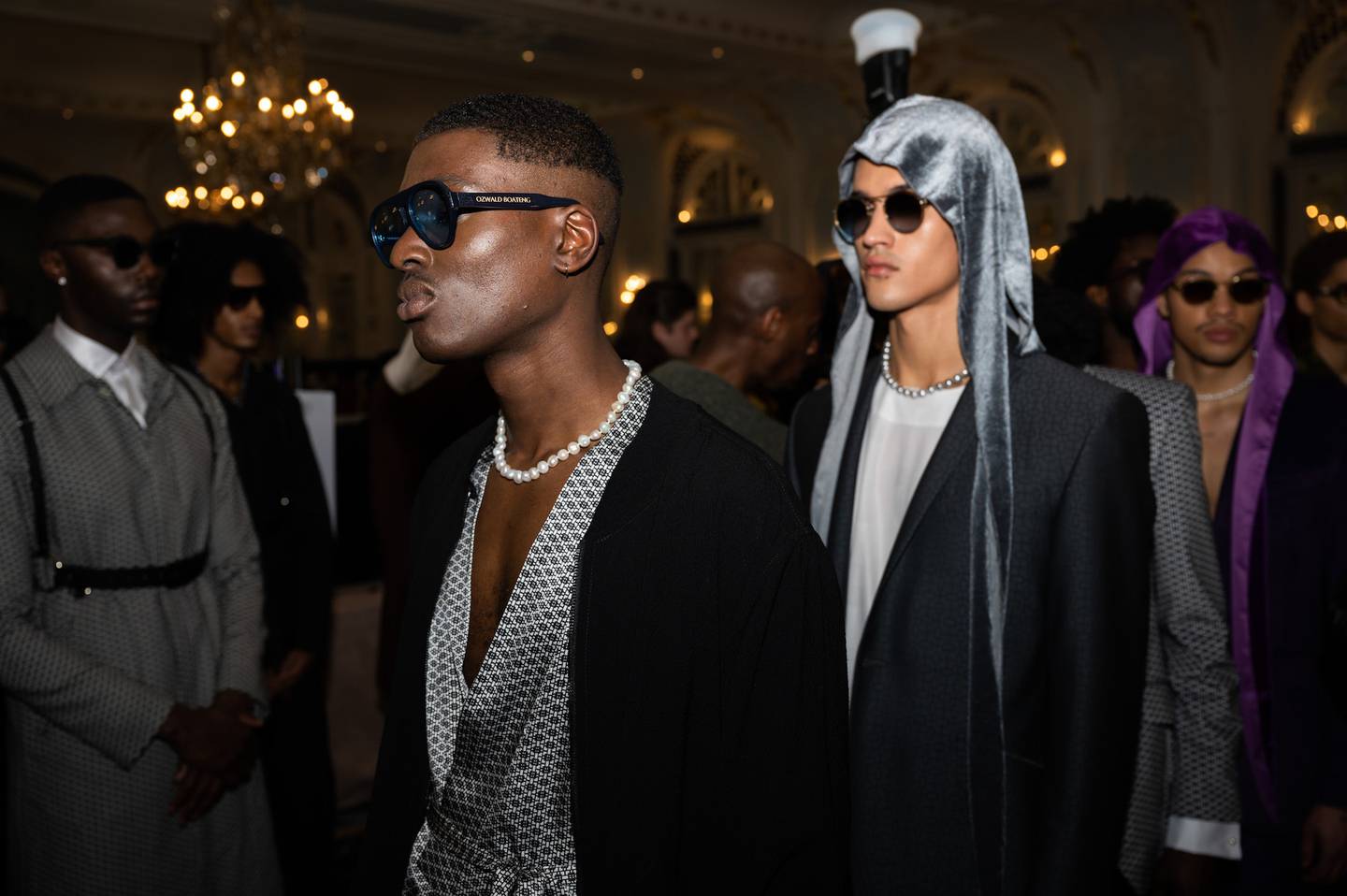Shared from www.businessoffashion.com
LONDON — Ozwald Boateng’s return to London Fashion Week was not like any other event on the schedule.
The show opened with a video montage of portraits of Black creatives in music, fashion, art and film, their names flashed up on screen in time to a crescendoing drum set. Models in sharply tailored suits and flowing silks mixed with a long list of celebrities — including actors Idris Elba and Nicholas Pinnock, and musicians Dizzee Rascal and Kojey Radical — on stage at London’s Savoy Theatre. There was drumming. There were trumpeters. By 9:30 p.m., the entire 100-strong cast was crammed together on stage, dancing to a live a capella rendition of Soul II Soul’s “Back to Life.”
“This is a celebration of the culture, the Black culture, here in this country for 30, 40, 50 years,” Boateng said, speaking to BoF ahead of the show in one of the hotel’s ballrooms. After decades of being “the only Black guy in the room,” the designer said he is finally seeing a change in the industry.
“In my own collection, my ability now to express my culture [in] my work is limitless now,” he said. “Before I had to be much more clever in my approach, I couldn’t be as front footed as I can today. It’s almost like the time has now allowed me now to really express creatively what I really want to say.”
The extravaganza marks something of a homecoming for the designer, whose last in-person show in 2019 was held at New York’s legendary Harlem Apollo Theater, where musical greats like Sarah Vaughan, Billie Holiday, Ella Fitzgerald and James Brown got their starts. In fact, it’s his first show in London since 2010.
The timing felt right to hold a show that could serve as a marker in time after two years of seismic changes, he said. As well as the pandemic and the resurgence of the Black Lives Matter movement, Boateng’s father passed away in 2020. His birthday would have been the day before the show.
“It feels like the world is just about to open up again,” Boateng said. “I just know how we tend to move too quickly and maybe forget what happened before. And I want to punctuate the moment and say: ‘Look, this culture has contributed, and we contribute beautifully.’”
Boateng, who was born in late 60s London to Ghanaian parents, quickly built a name for himself in the fashion world by marrying traditional tailoring techniques with a more modern aesthetic, drawing on his African heritage through his bold use of colour and textiles. His label, which he launched in 1989, put forward an exciting new vision for men’s suiting.

In 1994, he became the first British tailor to stage a fashion show as part of Paris Fashion Week. The following year, he opened his first store on Vigo Street at the end of the famed Savile Row, bringing a new lease on life into the sleepy street. Soon, he was dressing A-list celebrities like Will Smith, Daniel Day Lewis and Jaime Foxx. In 2003, he was appointed to the creative helm at LVMH-owned Givenchy Homme. After four years, he stepped down from his position at Givenchy, turning his full attention to his namesake label. That same year, he opened a new 6,000-square-foot flagship store on Savile Row.
His new collection, which will only be available on a made-to-order basis, is the perfect marriage of Boateng’s British and African heritage. His Ghanaian roots come through in the abundance of rich colours, as well as through more subtle details, like the Adinkra symbols that adorn silk bombers and velvet tuxedo jackets, or the Kente cloth used for his balaclavas. His Saville Row influence is equally present in the tailoring and construction of the collection.
“For me, detail, textile, attention to cut: that’s my universe,” he said.
Images and Article from www.businessoffashion.com

